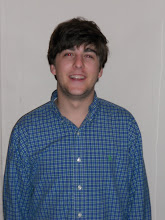Underground Cinema and Warhol
1. What were some of the venues associated with the early underground film movement in New York City? What were some of the unique characteristics of the Charles Theater and its programming?
Cinema 16, Bleeker St. Cinema, and the Fashion Industries Auditorium were all NYC venues of the underground film movement. The Charles Theater held jazz shows, local artist exhibitions, and other art house programs.
2. Which filmmakers did Jonas Mekas associate with the “Baudelairean Cinema”? Why did Mekas use that term, and what were the distinguishing characteristics of the films?
He associated Jack Smith, Ron Rice, and Ken Jacobs with “Baudelairean Cinema”. Baudelairean comes from the French poet’s name because these guys used new techniques (like Baudelairean did) to shock audiences and break social norms.
3. Why did underground films run into legal trouble in New York City in 1964? What film encountered legal problems in Los Angeles almost on the same day as Mekas’s second arrest in New York City?
The World Fair was coming to town around 1964 and shutting down some of the underground cinemas was an attempt to clean-up the city. Kenneth Anger’s ‘Scorpio Rising’ encountered legal problems and protests in LA.
4. What were some of the defining characteristics of Andy Warhol’s collaboration with Ronald Tavel? What were some of the unique characteristics of Vinyl? How does Edie Sedgewick end up "stealing" the scene in Vinyl?
Tavel took the novel ‘A Clockwork Orange’ and wrote a script just using the main/essential plot elements of the book. Tavel thought this would be a better structure for how Warhol made his films. Edie stole the show through her mesmerizing, trance-like performance.
5. In what ways did the underground film begin to "crossover" into the mainstream in 1965-1966? What films and venues were associated with the crossover? How were the films received by the mainstream New York press?
Warhol’s ‘Chelsea Girls’ was one of the first, if not the first underground film to “crossover” to the mainstream in 1965-1966. The film was showcased at mainstream cinemas from NYC to LA. Most of the mainstream press did not like the movie, but Newsweek gave the film an excellent review.
6. Why was Mike Getz an important figure in the crossover of the underground?
He gave underground film more exposure than anyone had done before by sending out compilations of underground films to 22 different cities around America. These compilations were mostly played at midnight screening and eventually were referred to as ‘The Underground Cinema 12’.
7. How do Hoberman and Rosenbaum characterize Warhol’s post-1967 films?
They characterize Warhol’s post-1967 films were stylistically similar to his early work but his subject matter began to become increasingly explicit via images of drugs, sex, and other taboo subjects

No comments:
Post a Comment